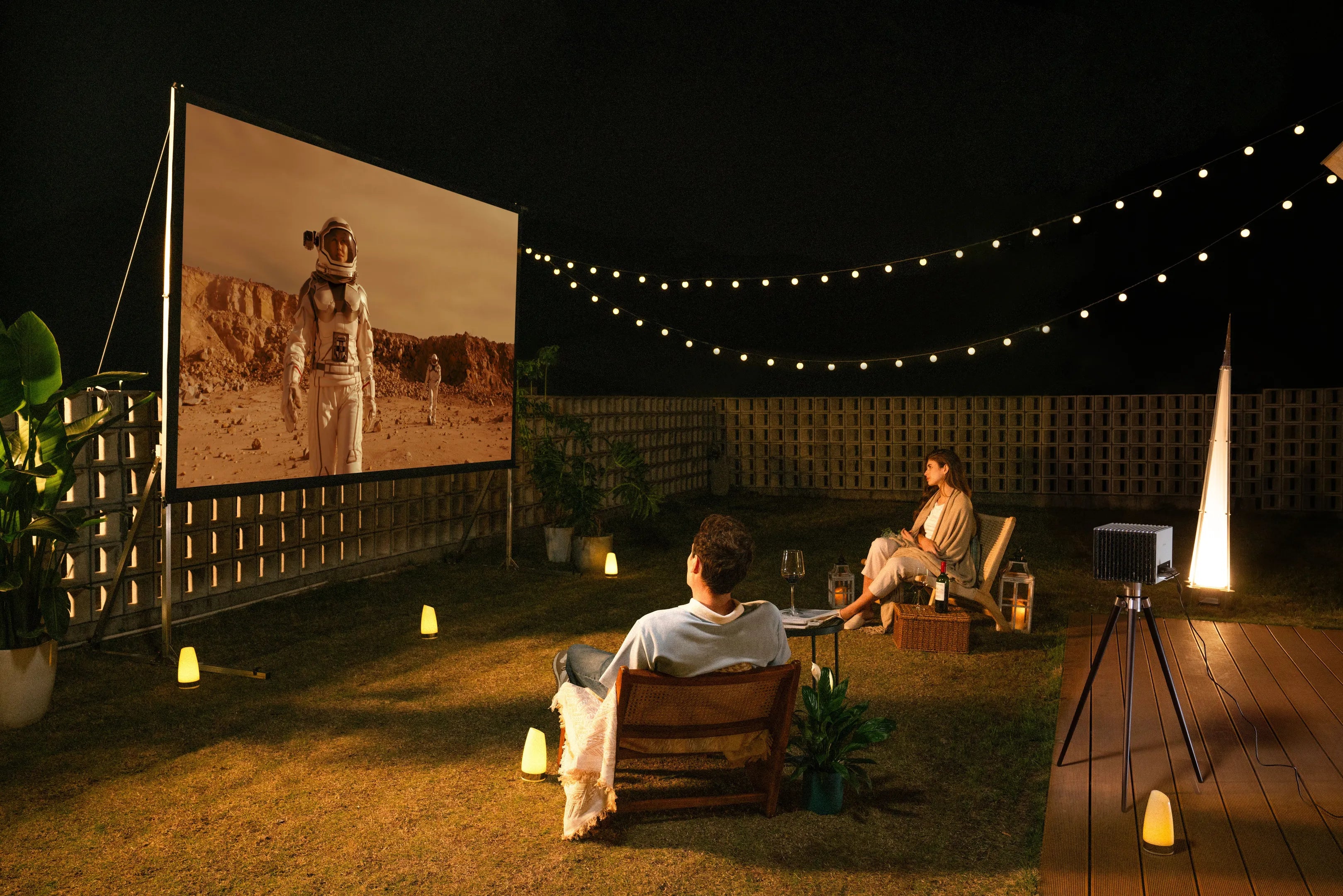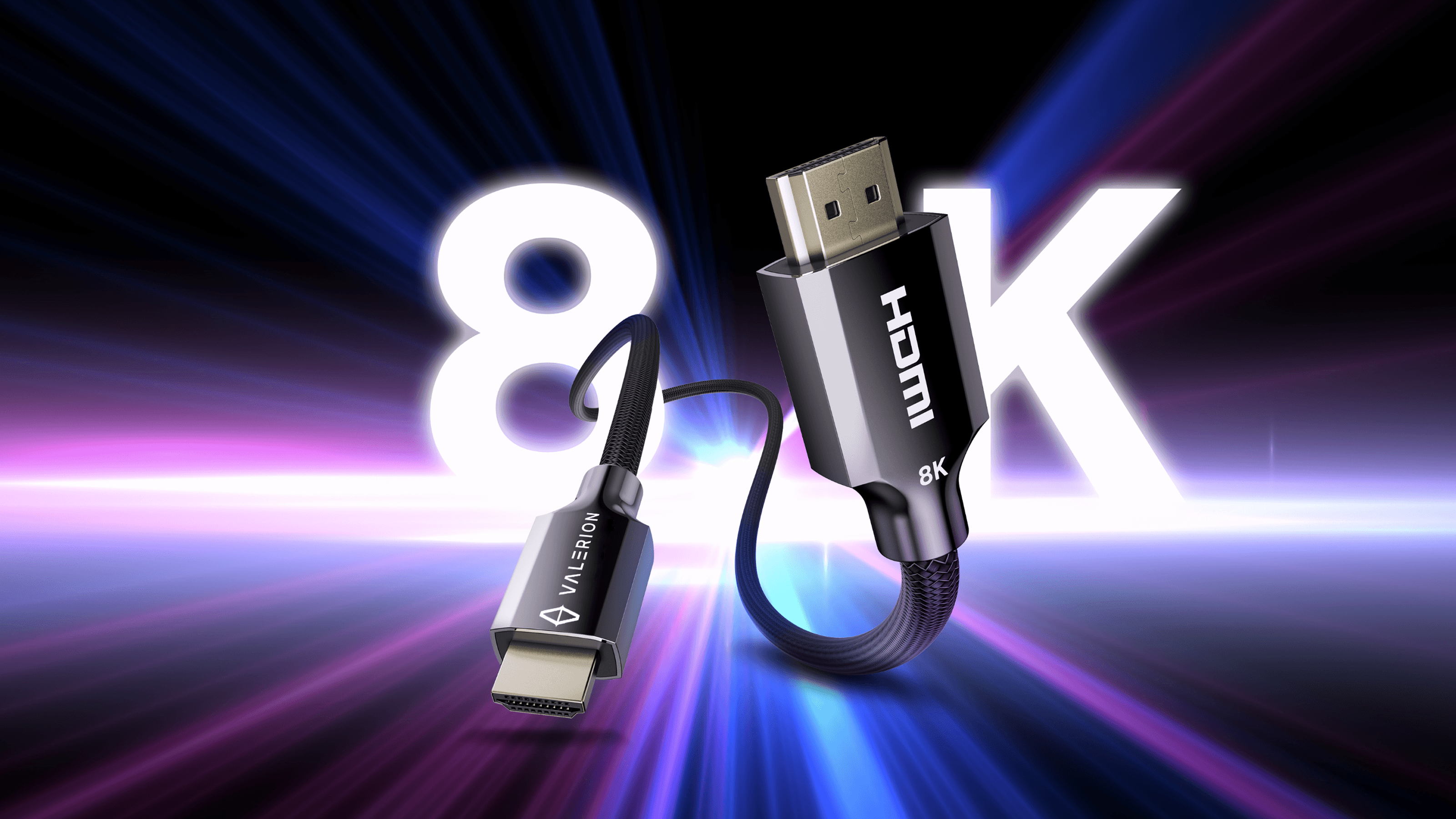Did you know you need between 2000-2500 ANSI lumens to get the best outdoor projection when there's sunlight or artificial light around?
The right outdoor projector lumens can make all the difference between watching a crystal-clear movie and dealing with a washed-out disappointment. Indoor projectors work fine with lower brightness, but the lumen requirements of outdoor projectors change significantly based on your setup. Night viewing needs less brightness, so you can manage with fewer lumens. A large event with screens over 16 feet wide requires at least 6,000 ANSI lumens to keep everything visible.
Knowing your specific needs is a vital part of picking the right lumens for daytime versus night viewing outdoors. Daytime shows or fully lit environments work best with projectors that pump out more than 5000 lumens. Home setups or spaces with some ambient light can work well with 1500 to 2500 lumens.
Your screen's size makes a big difference in choosing a projector. A 100-inch diagonal screen might look great with 1000 ANSI lumens, but this is a big deal as it means that a 200-inch screen needs about 3500 lumens for a vivid outdoor image. Your projector's distance from the screen matters too - the further you place it, the more ANSI lumens you'll need to keep the picture crisp.
This piece will help you determine the exact number of lumens your outdoor home theater system requires, based on your viewing conditions, screen size, and the type of event.
How Bright Should an Outdoor Projector Be?
Your outdoor viewing experience largely depends on the brightness of your projector. Indoor settings let you control light easily. The outdoors brings its own set of challenges that make you think about projector brightness differently.
Projecting outdoors comes with more challenges than indoor setups. You can control indoor light with curtains and switches. Outside, you'll deal with streetlights, car headlights, and changing weather.
Ambient light can hurt your image quality in two main ways:
- Glare: Light bouncing off the screen creates visible hot spots
- Washout: Bright surroundings make colors and details harder to see
Outdoor spaces usually require larger screens, which require more light for optimal image quality. A 100-inch screen might work well with 1000 ANSI lumens. Double that to 200 inches, and you'll need approximately 3,500 lumens to achieve similar results.
You'll want a brighter projector outdoors than you would indoors. This becomes even more important if you plan to project before dark or in areas with lots of ambient light.
Best Lumens for Different Outdoor Conditions
The ambient light around you plays a crucial role in choosing the right brightness for outdoor projection. Your projector's required lumens will change based on the time you plan to use it.
Daytime viewing: 3000–6000 ANSI lumens
Projecting outdoors during daylight is tough. People see about 6000-10,000 lumens on a bright day. You'll need powerful equipment to get visible projections in full daylight. Professional projectors can put out up to 10,000 lumens, but these are built for large venues like expos, not backyard movie nights.
You should start with at least 3000 ANSI lumens for daytime projection, especially in shaded areas. Industry standards indicate that projectors with 3,000 to 4,000 lumens provide the best visibility in bright sunlight. Models with 4000-6000 ANSI lumens work great for backyard viewing at dusk.
Nighttime viewing: 500–2500 ANSI lumens
Once the sun sets, you won't need as much brightness. The minimum you'll need is 500 ANSI lumens for outdoor projection at night. While 300 ANSI lumens might be enough for basic setups, 2000-2500 ANSI lumens gives you better clarity and sharper images in complete darkness.
Small gatherings in dark spots like camping in woods can work with just 200-500 ANSI lumens. Backyard movie nights with some street lights nearby usually need 600-1000 ANSI lumens.
Shaded or overcast conditions: 1500–3000 ANSI lumens
Light levels drop from over 10,000 lux in full daylight to about 1,000 lux on overcast days. Projectors with 1500-3000 ANSI lumens work well in these conditions.
You'll want at least 2,000 lumens to maintain clear, visible images during early evening screenings or in partially shaded spaces. Areas with medium ambient light, like backyards with some street lights, usually do fine with 600-1000 ANSI lumens.
Your screen size affects brightness needs too. A 100-inch diagonal screen might work well with 1000 ANSI lumens outdoors, but a 200-inch screen needs about 3500 lumens for similar quality.
How to Calculate Lumens for Your Setup
A simple formula based on screen dimensions and viewing conditions helps determine your projector's brightness requirements. You'll pick the perfect projector every time once you become skilled at this calculation.
Step 1: Measure your screen size
The original step requires calculating your screen area in square feet by multiplying width by height. A standard 16:9 aspect ratio screen needs these steps:
- Measure width and height in feet
- Multiply these measurements together
- Round to the nearest half number if needed
A 100-inch diagonal screen with 16:9 aspect ratio has approximately 30 square feet of area.
Step 2: Choose your target foot-lamberts
Foot-lamberts (fL) measure your projected image's brightness. The Society of Motion Picture and Television Engineers (SMPTE) recommends these targets:
- Dark theater room: 16 fL (range: 12-22 fL)
- Room with some ambient light: 30-50 fL
- High ambient light outdoors: 60 fL or higher
Step 3: Use the formula: lumens = fL × screen area
The math works simply: multiply your target foot-lamberts by your screen area in square feet. Divide the result by the gain value if your screen has gain other than 1.0.
Formula: Lumens = Foot-lamberts × Screen Area ÷ Screen Gain
Example calculation for a 16x9 ft screen
To name just one example, see a 16×9-foot outdoor screen (144 square feet):
- Evening viewing (16 fL target) needs: 16 × 144 = 2,304 lumens
- Moderate ambient light (40 fL) requires: 40 × 144 = 5,760 lumens
- A 1.3 gain screen lowers requirements to: 2,304 ÷ 1.3 = 1,772 lumens
This straightforward calculation ensures your outdoor projection stays bright enough whatever the conditions.
Other Factors That Affect Brightness Needs
Several variables beyond simple calculations can affect how many lumens your outdoor projector needs. Learning about these factors helps you optimize your setup for the best viewing experience.
Screen material and reflectivity
Screen materials reflect light back to viewers differently. Matte white screens provide excellent color neutrality with a gain of approximately 1.0 (equivalent to a whiteboard). High contrast gray screens boost black levels but slightly reduce brightness with gains between 0.7–1.1.
Ambient Light Rejecting (ALR) screens are a great way to get around brightness problems. These screens reflect light from specific angles while rejecting ambient light. ALR screens let you use projectors with fewer lumens even in tough environments.
Projector distance and throw ratio
The throw ratio measures the relationship between projection distance and image width. The math is straightforward: Throw Ratio = Distance/Width.
Your projector's brightness and image size change with distance. A closer projector creates a brighter but smaller image. You'll need more lumens to keep the image clear as the distance increases. To name just one example, a standard throw projector (ratio ~2.0) needs to be 10 feet from the screen to create a 5-foot wide image.
Ambient light and time of day
Light levels change throughout the day:
- Full daylight: 20,000–100,000 lumens
- Overcast midday: 1,000–2,000 lumens
- Sunrise/sunset: 400 lumens
The sun's intensity peaks between 11 a.m. and 2 p.m., so avoid projecting then. You'll get much better results in late afternoon, just before sunset, or early morning.
Type of content being projected
Different content types need varying brightness levels. Darker movie scenes require better contrast and might work better with gray screens, even with slightly lower brightness. Presentations with bright backgrounds appear clear with fewer lumens compared to films that have varied lighting.
Conclusion
Choosing the right lumen count is the most important decision you'll make when buying an outdoor projector. This piece shows how different factors affect your brightness needs. ANSI lumens give you the most reliable measurements, while regular or LED lumens might confuse buyers with inflated numbers.
Your lighting conditions determine exactly what you need. Night viewing works great with 500-2500 ANSI lumens. Daylight viewing just needs 3000-6000 ANSI lumens to see clearly. Shaded or overcast conditions usually work best with 1500-3000 ANSI lumens.
Screen size plays a vital role in picking your projector. Bigger screens just need more brightness to keep picture quality consistent. You can calculate exact requirements with a simple formula: Lumens = Foot-lamberts × Screen Area ÷ Screen Gain.
Screen material, projector distance, and content type shape your brightness requirements. ALR screens help cut down lumen needs by keeping ambient light away. Shorter throw distances focus brightness to create clearer images.
This knowledge helps you pick a projector that shows bright, vivid images in any setting. You won't waste money on overly bright projectors or end up disappointed with dim ones. Your outdoor movie nights will look perfect with just the right balance of brightness and clarity.
The goal is simple: bringing movie magic to your backyard with equipment that perfectly matches your needs. For more in-depth guides on creating the ultimate backyard cinema experience, from understanding different screen types to optimizing your sound, be sure to explore the Valerion blog. With the proper knowledge and equipment, you can transform any space into a magical movie-watching destination.






